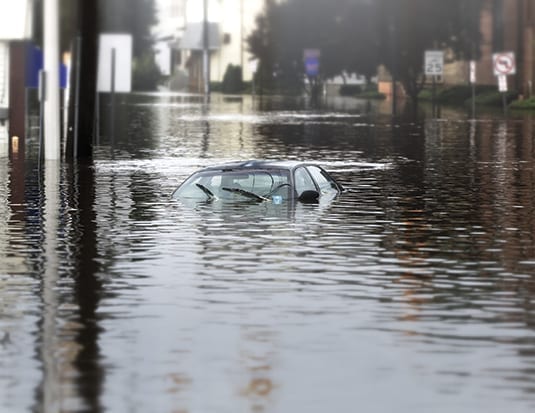Floods, wildfires, storms: Mother Nature isn’t always on her best behaviour. Natural disasters are hitting many places, and the question often isn’t “what if?” but “when?” And when “when” happens, you need to be ready.
“First and foremost, you should always have a disaster emergency plan that’s about planning, documentation, and training,” says Charlie Guthro, VP of Strategic Services North America for ARI Fleet Management. “You just can’t hope that you do things right. You must make sure you’ve trained people, have work and training aids, and always have the proper level of authority and control.
“Every (fleet) is unique to the type of service you provide. Some are more complex, some less, and it relates to the type of core service you provide. Think about the difference of a plan for a utility company versus retail. But for any business, you still need to stay in business.”
A fleet’s most vulnerable positions, Guthro says, are fuel, maintenance, equipment, and above all, people. There should be proactive plans, set well in advance and updated as necessary, to ensure that these are addressed.
You can’t run without fuel
Fuel can be a major problem. It’s a vital need for your vehicles, as well as any generators or other equipment needed to deal with power outages, but getting it can be very difficult in an emergency. Guthro suggests that if you have proprietary cards for refuelling, you should look into setting up an open network, in case your usual supplier can’t provide you with fuel. Considerations include mobile fuel delivery, card locks, or regular credit cards as backup, such as Visa or MasterCard, that are accepted at stations outside of your regular provider.
Internally, you need a priority plan for fuel distribution, Guthro says. “You need control where someone says, ‘These are the people who will get fuel, and how, and where,’” he says. “For example, you might restrict it from salespeople to (prioritize) people who are servicing equipment. The guy who wants gas might not be the one who needs it.”
It’s also important to consider any government fuelling regulations that may be put in place during a disaster to restrict access, based on need. Large fleets with specific requirements, such as those carrying loads that require refrigeration, may want to consider installing above-ground, on-site fuel storage.
There’s usually sufficient warning before most major storms, Guthro says, and a good idea is to require every vehicle on the fleet to be filled up in preparation. “A full fuel tank will buy you time, and minimize shortages,” he says. If supplies run low, vehicles that aren’t vital to operations can be siphoned to fuel those that are, or to fuel equipment such as generators.
Next up is maintenance, and being sure that you can service crucial vehicles in the aftermath of a disaster. “You’re under extreme conditions, so keeping the fleet rolling is high priority,” Guthro says. If your maintenance is in-house but your technicians can’t get in, you should have a plan for outsourcing. Check your service records to see what parts are frequently replaced and keep spares on hand, especially those that are vital to the vehicle’s use, such as extra blades and hydraulic hoses for snow plows.
Looking after your fleet
You need a plan for your equipment, including keeping it safe – and that includes fleets that will wait out the problem. “Many companies say, ‘I don’t need a plan, I’ll just shut down for three days,’ but even if the business is closed, the equipment has to be safe and protected. You can’t assume your normal location is safe or secure. You might want to have a contract for above-ground parking in a major snowstorm or flooding.”
If a fleet must remain operating, Guthro suggests proactively setting up rental agreements should you need extra vehicles, or generators or other equipment. Everyone will want the same equipment after a disaster, so work out potential needs, as well as payment methods, to get priority.
Looking after people
Finally, Guthro says to consider people, and on every level, from professional to personal. “If you want people to be at work, you have to provide a service,” he says. “You need food, water, someplace to put people, either on-site or designated.” If your fleet will be on 24/7 in the disaster aftermath, determine the shifts people will work, and even if they can work. Someone may only live a short distance away, but might not be able to get to you if there’s flooding.
Have an updated list of contacts for each employee. “People have concerns for how the disaster is affecting them,” Guthro says. “If the disaster occurs when your employees are at work, you may have to notify their families that they’re safe.”
Most importantly, all of your plans, training, and information need to be written down. Key people may not be there in an emergency, and every employee has to be able to open the book and implement the operation.
“In an emergency, you spend a lot of time overwhelmed,” Guthro says. “Plan, document, train, learn from each event, and then start all over again. Each event teaches you something you wouldn’t know before.”



